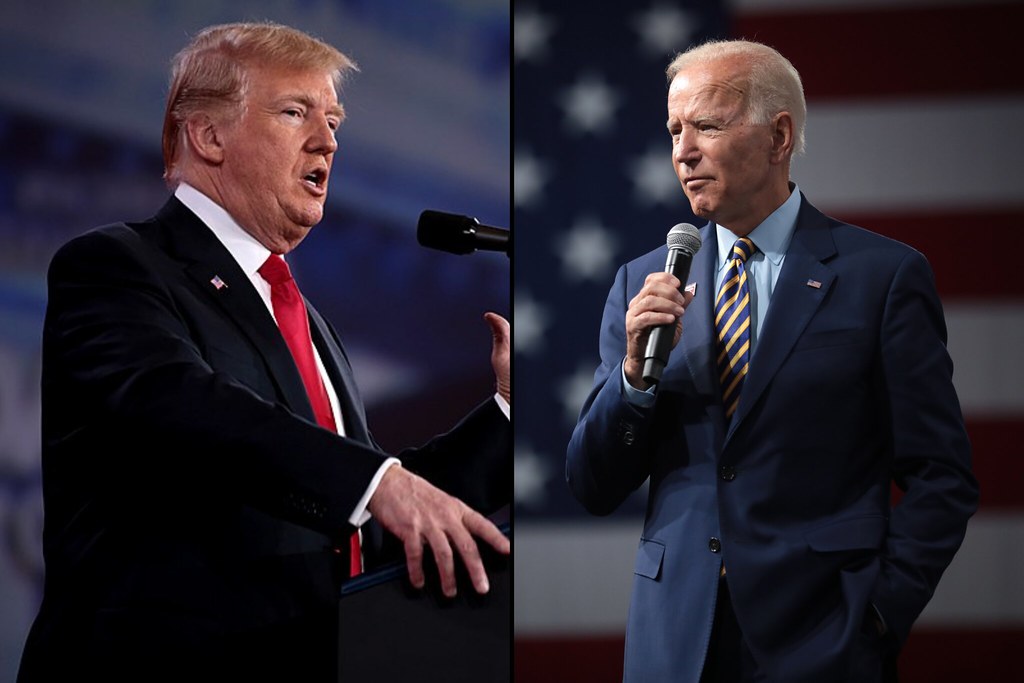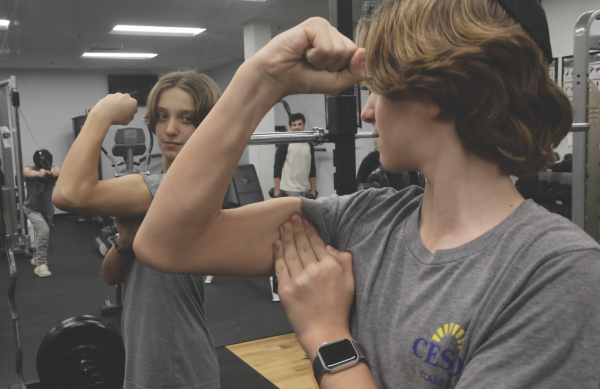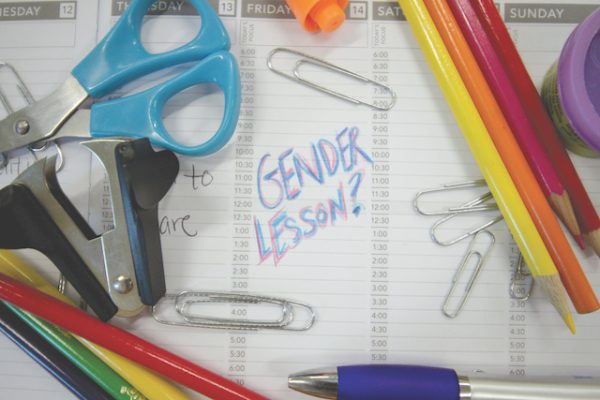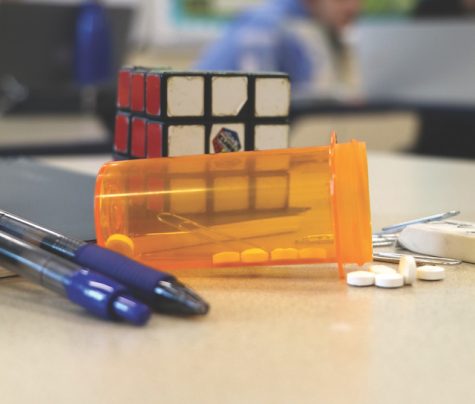Settling the score
June 10, 2022
In honor of the 50th anniversary of Title IX legislation that mandated that schools provide equal opportunities to female athletes, many schools are reevaluating their athletics programs to see if they are truly providing equal opportunities for all. Inspired by a massive study conducted by students at the Shirley Povich Center for Sports Journalism at the University of Maryland, the Lion’s Tale decided to do a similar examination.
We concluded that CESJDS offers excellent athletic opportunities to all of its students. Many of our teams train with experienced coaches and have gone on to win PVAC championships. However, even though JDS offers the same resources to both their female and male athletes, many female athletes feel a difference in the amount of support and attention they receive. The problem, in other words, is not institutional: it’s an attitude towards women in sports amongst the student body that mirrors larger attitudes in society.
Gender inequality in sports outside of JDS:
Recently, sports media companies have made it a priority to shed light on women’s athletics to reduce the disparities between male and female sports teams.
Over the past couple of years, society has worked to create a more equal balance in this male-dominated field. But in terms of audience and ad revenue, there is no female equivalent to the World Series or the Super Bowl. While some might argue that change begins with companies and professional sports leagues, others argue that change needs to happen first on secondary school playing fields.
University of Maryland alumni Lauren Rosh and Jaelen Watson spent a semester studying equity in the athletic programs at secondary Title IX schools as their senior capstone project. Their work became part of a twelve article series posted by the Capital News Service called “Unlevel Playing Fields.” They aren’t satisfied doing just one project and moving on, however; they’re hoping to encourage high school journalists to closely examine equity in their own schools.
These disparities do not start on the collegiate level. Rather, they are the results of the unfair advantages that are given to boys at every level of athletics: high school teams, middle school teams and even junior league teams.
For her individual project, Rosh took an in-depth look at equity in athletics. In her efforts to address this problem, she interviewed female athletes, coaches and schools. She focused on schools that received Title IX funding — federal funding that prohibits school districts from discrimination on the basis of gender identity, sexual orientation or race.
“School districts won’t specifically go out of their way to kind of say…‘you all play sports for this school and this is how you should be treated, or this is what it should look like,’” Rosh said. “If it doesn’t look like this, then this is where you need to go speak to your principal, speak to your regional athletic director. They won’t say that.”
The issue with Title IX funding is that some schools that receive it fail to do sufficient research and understand all that it encompasses. They often unintentionally violate its terms by failing to educate their student body on it, leaving female athletes feeling mistreated and underappreciated.
In conducting her research for their joint project, Rosh worked alongside Watson, who is now a production assistant at News 4 in Washington, D.C. This year, Watson spent a semester investigating an Office for Civil Rights (OCR) complaint — an investigation of an incident of discrimination — that turned into a lawsuit.
In this lawsuit Watson reported, the Portland Oregon School District was investigated to determine whether they discriminated against female student athletes at Grant High School by not providing students with equal opportunities.
In 2020, three members of the Grant High School softball team filed a lawsuit against the Portland School district for unfair treatment after plans in 2019 to renovate the field were canceled. Grievances included the unkempt conditions of the girls’ softball field which was substantially far from the school’s campus, Watson wrote.
After the softball players won the case, the school made plans to renovate the field. However, these extensive renovation plans were then canceled unexpectedly for a second time. The girls softball team was left to continue to play on their neglected field.
The Portland School District received a lot of pushback from parents on the cancellation. In 2021, they decided to reinstate their plans to construct a new field, but many parents were disappointed to see the amount of time and money it took for the school district to listen to their requests, Watson wrote.
Both Watson and Rosh hope to see the general public become more educated on Title IX funding and focus on girls athletics to prevent cases like Portland from happening again.
“Oftentimes, we have found that those Title IX coordinators who are put into place in these school districts, those are the type of cases that they handle, they don’t really go beyond looking into athletics,” Watson said. “So [Lauren and I] were talking and we were like we don’t really know if these schools or these students per se are given this education and that may be a problem.”
Gender inequality at JDS:
CESJDS offers several different athletic opportunities for anyone who wants to participate. Though JDS does not receive Title IX funding, they emphasize their goal of equity through their Diversity Statement, which states, “Our commitment to diversity and inclusion emanates from the School’s core values of K’dushah (Holiness), V’ahavta L’rei-akha (Loving your Neighbor), Kehillah (Community), and pluralism.”
Athletic Director Becky Silberman believes that the issues in disparity mostly begin at collegiate levels and are a larger problem for other high schools. When Silberman started as Athletic Director in 2019, she made it a priority for the athletic program to treat female athletes at JDS equally to their male counterparts. She aimed to show them their full potential and challenge the athletic world’s norms.
“I think JDS does and has been doing a great job at making sure female athletes are receiving equal opportunities to the boys. In fact, we have more girl athletes than boys,” Silberman said.
Despite these efforts, many female athletes notice inconsistencies between the boys’ and girls’ sports teams, whether it be the amount of publicity, resources or game attendees.
For starters, the JDS dance team, which has only girls, does not have a designated area to practice nor any mirrors. Many members of the dance team have expressed how difficult it is to practice without mirrors, and alumna Maya Bellas (‘20) says that the team has been asking for mirrors since “2017 at least.” Although the dance team still does not have a regular space to practice in, it has been confirmed that the mirrors are to be installed by next year, after at least five years of asking.
Sophomore Hannah Shank, who plays softball, soccer and basketball at JDS, has had years of experience with these discrepancies.
“More people go to the boys’ events and everything and pay attention more to the boys’ events,” Shank said.
Shank shared that the boys’ baseball team gets to play on the “better” field, while the softball team is left with the “lower one that’s not as good.” The higher field is in better condition and is much larger than the lower field that is designated for the softball team. Additionally, the higher field is significantly more private and is reserved just for the baseball team, while the softball team plays alongside many other sports.
“I think girls often feel neglected because, well, it’s hard to say, but the attendance at boys’ games is often higher because the games feel more competitive and the level of play is higher,” junior Sammy Schreiber said. “Also I think a lot of the attendance at male games is often higher because it’s filled with boys and not girls who show up.”
Shank recognizes that these discrepancies are inevitable, and she understands that they are certainly not the intention of the JDS athletic program. However, whether intentional or not, these disparities have the ability to affect the overall experience of the female athletes at JDS, as well as their self-esteem and mental health.
High School Principal Dr. Lisa Vardi has picked up on this discrepncy as well.
“What has sort of jumped out at me, and I think this is pretty common in lots of schools, is that the way in which a community supports male athletic teams is very different than female athletic teams, meaning the crowds are larger,” Vardi said.
Vardi explained that “parity and athleticism translate into a sense of belonging.” She talked about how the responsibility of encouraging equity does not solely fall on the athletic department, but on the students as well.
If students do not make an effort to support their peers, the athletes will feel it. The lack of female representation in sports stems from female athletes not feeling supported from an early age. When athletes do not receive support, they become discouraged from playing the sport and lose the desire to participate in the future. If students make more of an effort to support all teams, this issue can be resolved.
“I think the boys’ sports are more celebrated and valued, which is definitely something that is not good. But this is also the case everywhere,” junior Jonah Gross said, who plays varsity basketball and baseball.
Many students have recognized that the hype around athletic events can contribute to a lot of these discrepancies. The more attention a sport gets, the more recognition and therefore value it receives. A lot of students participate in sports in order to gain a sense of community and to have their accomplishments recognized by their peers. If they do not feel valued or supported, this sense of community is taken away.
Publicity does not just translate to crowds. It is also important to get equal coverage of both the boys’ and the girls’ teams, which is something that the Lion’s Tale acknowledges it needs to improve on. Since 2019, 11 articles about girls’ athletics have been published online for every 14 articles written about boys’ athletics.
“We are not really a school centered around sports, but when we do get into it, it does tend to seem to have a focus on the boys,” Gross said.
What JDS can do to improve gender equality:
Although JDS does a better job than many schools when it comes to promoting equity within their athletics program, JDS could take further steps, and the coaches will have to have a role in this change.
Both Rosh and Watson emphasized the importance coaches in encouraging equality within the athletics program. Especially in a school that does not receive any kind of protection from Title IX, it is crucial that coaches step up and educate their players on how to create an equitable environment.
High school history teacher Matt Cohen, who serves as assistant high school baseball and girls basketball coach, explains that he uses the same coaching methods whether coaching a female team or a predominantly male team.
“I really don’t try to look at it as, oh well, you’re a girl, therefore have to be, you know, X, Y, Z. I don’t see either gender as one who can’t do something that the other can do. I just try to go out there and try to treat them as students, student athletes, and support them in whatever way I can,” Cohen said.
This is the first year the baseball team is co-ed, with freshman Shalvah Lazarus being the only female on the team.
“I chose baseball over softball because baseball is my sport, and I’ve always been playing it,” Lazarus said.
While Lazarus feels that there is less “representation” and “ respect for female athletes,” she appreciates the support that JDS has given her and the effort that her coaches have put in to make her feel as comfortable as possible.
Cohen said that as a coach, it’s very important for him to make sure that he is careful about the language he uses. He and other sports coaches at JDS even received training for this. He explains how coaches need to be cautious about how they use gender pronouns and should try to avoid referring to different groups as “guys.”
“Celebrate the accomplishments of all students and frame it in a way where it’s about the students, not about the gender of the student,” Cohen said. “…I think that’s a really good way to help make sure that we are not trying to highlight the gender difference, but highlight the success of our students.”
As recognized by both students and faculty members, a large responsibility falls on the student body to recognize these accomplishments and support all sports teams.
“I’m all about empowering students to see how they can sort of drum up that excitement…And so that’s what’s important to see: students supporting each other, especially at a school,” Vardi said. “I don’t think it’s up to the coaches. I think it’s up to the students and the team captains for each of the teams. That’s something that the team captains can be empowered to do as well.”
Making sure all athletic teams are appreciated by the school, and more importantly, the student body, will help to promote gender equality and make sure all athletes, no matter their gender, feel supported.
“I do hope that in the future we get to see boys and girls sports on a more level playing field not only in high school sports but also in professional sports because it will ultimately make a difference and they deserve to be just as celebrated,” Gross said.















